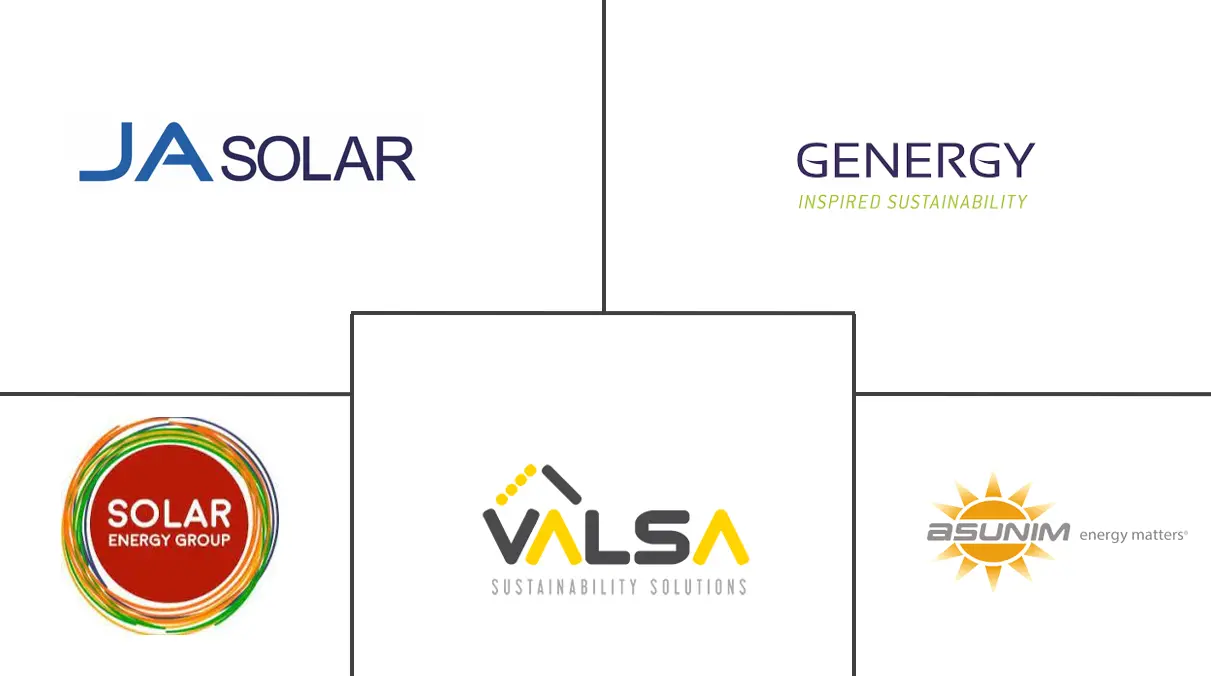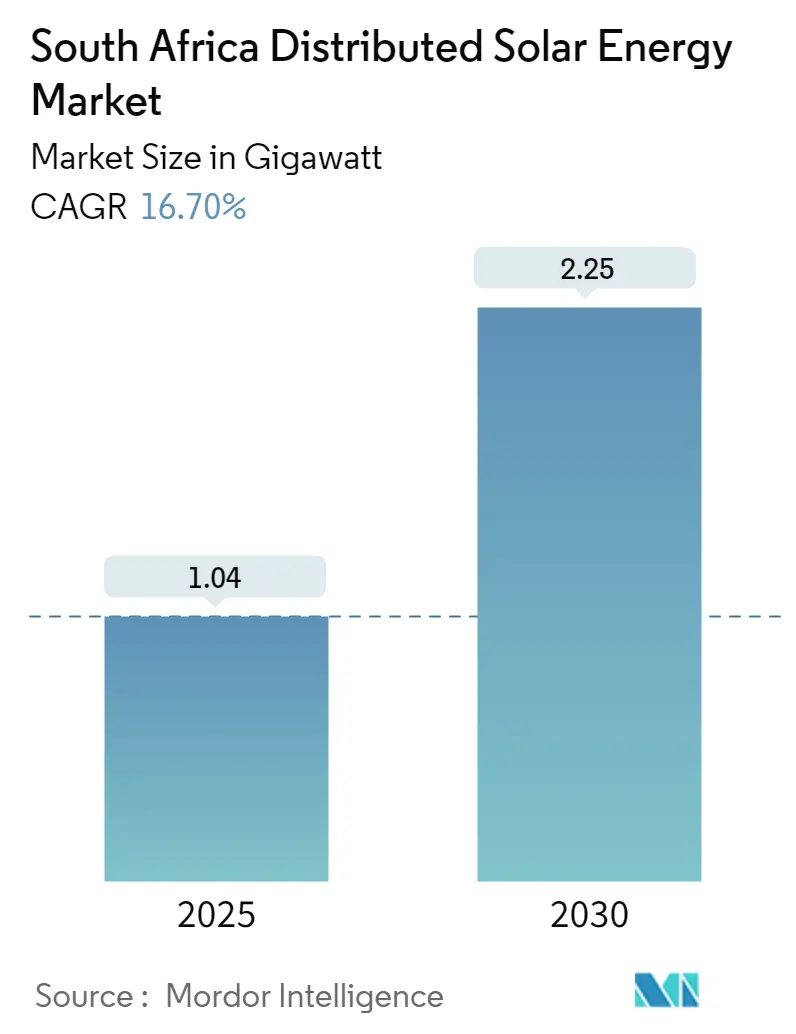
South Africa Distributed Solar Energy Market Analysis by Mordor Intelligence
The South Africa Distributed Solar Energy Market size is estimated at 1.04 gigawatt in 2025, and is expected to reach 2.25 gigawatt by 2030, at a CAGR of 16.7% during the forecast period (2025-2030).
- Over the medium term, factors such as supporting government policies such as the Renewable Energy Independent Power Producer Procurement Program and increasing investments in renewable energy are expected to drive the market.
- On the other hand, increasing adoption of alternate renewable technologies such as wind and hydropower is expected to hinder market growth during the study period.
- Nevertheless, owing to the increasing blackouts in the country, which are leading to an electricity crisis and increasing demand for continuous power, several opportunities are expected to be presented for the market players in South Africa to bridge the supply and demand gap.
South Africa Distributed Solar Energy Market Trends and Insights
Commercial and Industrial Segment to Witness Significant Growth
- Anticipated growth in the solar rooftop market is expected to be particularly prominent in South Africa's commercial and industrial sectors in the coming years, driven by the affordability and essential nature of this technology. Given that the commercial and industrial sector tends to have higher electricity consumption rates, the appeal of rooftop solar is magnified as a means of mitigating these elevated energy costs. This sector also boasts extensive roof spaces, making it particularly well-suited for the installation of rooftop solar PV systems.
- The GreenCape Smart Electricity project is actively working to establish a conducive environment for rooftop PV and other small-scale embedded generation (SSEG) technologies in the Western Cape. This initiative has the potential to result in over 200 MW of rooftop installations in the Western Cape in the foreseeable future.
- Furthermore, the operational collaboration of rooftop solar systems, generating electricity during daylight hours, aligns seamlessly with the peak operational periods of many manufacturing facilities. This enables these facilities to either reduce their reliance on the national grid or potentially eliminate it while the sun is actively generating power.
- In 2022, the cumulative installed solar PV capacity reached 5,826 MW, up from 5,816 MW in 2021. Furthermore, in South Africa, there has been an increasing customer interest in rooftop PV installations, even in the absence of specific policies or standards for promoting this technology.
- Hence, the use of rooftop solar PV modules in the commercial and industrial segments is expected to grow faster during the forecast period.
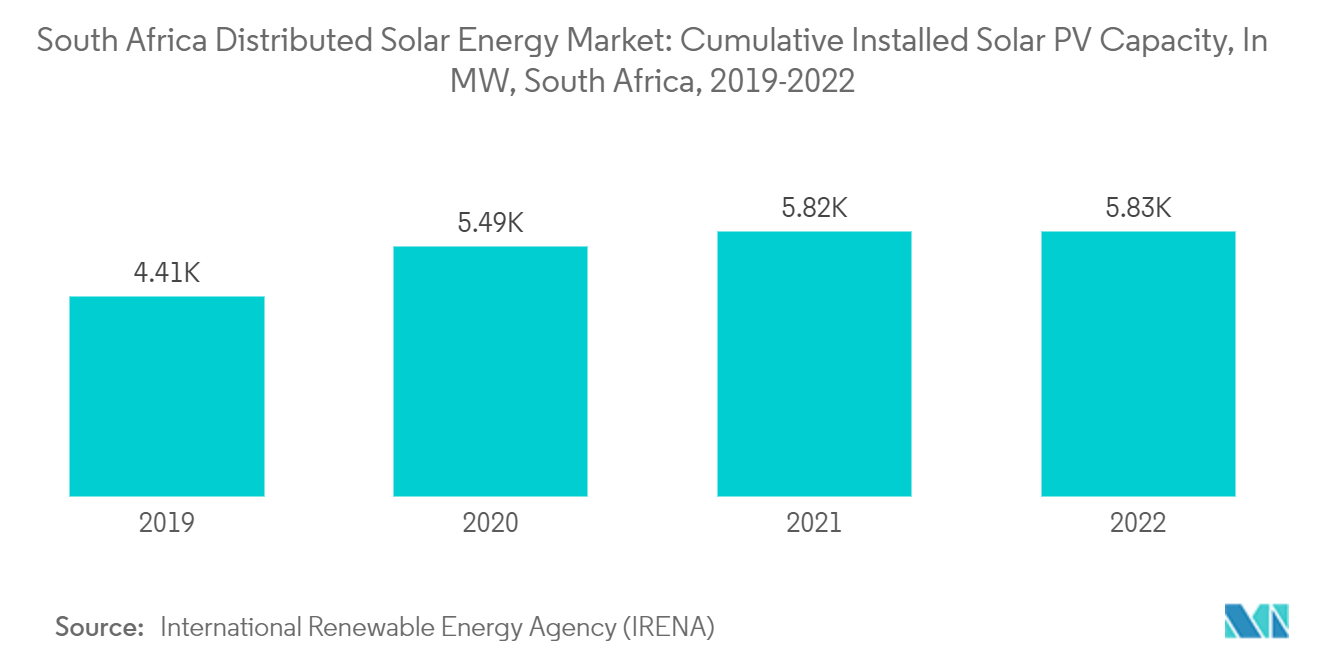
Supportive Government Policies to Drive the Market
- Supportive government policies are poised to drive the remarkable growth of the distributed solar energy market in South Africa. The country's commitment to renewable energy is exemplified through strategic initiatives, with the Renewable Energy Independent Power Producer Procurement (REIPPP) program standing out as a cornerstone. This program not only attracts substantial investments but also acts as a facilitator for large-scale solar projects, contributing significantly to the expansion of the solar energy sector. The transparent regulatory framework established by the government instills confidence in investors, creating an environment conducive to the flourishing of the distributed solar energy market.
- In tandem with the REIPPP program, South Africa has implemented a spectrum of complementary policies designed to accelerate the adoption of distributed solar energy. Tax incentives, feed-in tariffs, and net metering mechanisms have been instrumental in making solar installations financially viable for businesses and individuals alike.
- These measures not only drive economic feasibility but also underscore the government's commitment to fostering a decentralized energy landscape. By championing such policies, South Africa aligns itself with global sustainability goals and positions the nation as a key player in the transition to cleaner, more sustainable energy alternatives.
- For instance, the Integrated Energy Plan (IEP) was initiated to provide a roadmap of the country's future energy landscape, which directs future energy infrastructure investments and policy development. This policy is reviewed periodically to consider changes in the macroeconomic environment, changes in national proprieties, developments in new technologies, and others.
- The government of South Africa approved the Integrated Resource Plan (IRP) 2019, which aims to increase the share of renewable energy in the total energy mix. By 2030, the country aims for an additional capacity of 14.4 GW of wind power, 6 GW of solar, 3 GW of gas, 2.5 GW of hydropower, 2.1 GW of storage, and 1.5 GW of coal.
- Moreover, the explicit acknowledgment of the economic and environmental benefits of solar energy by the South African government reinforces the trajectory of the distributed solar energy market. These policies not only encourage the deployment of solar technologies but also contribute to the reduction of greenhouse gas emissions, thereby mitigating the impacts of climate change. The government's foresight in recognizing the dual role of distributed solar energy in fostering economic growth and environmental sustainability underscores its commitment to a holistic energy transition.
- With these steps, the installed capacity of solar energy in the country has observed significant growth in recent years. Between 2019 and 2022, the cumulative installed capacity of solar energy in the country increased by more than 28%, signifying the effective implementation of these programs in the country.
- Therefore, as per the points mentioned above, supportive government policies are expected to drive the marker during the forecast period.
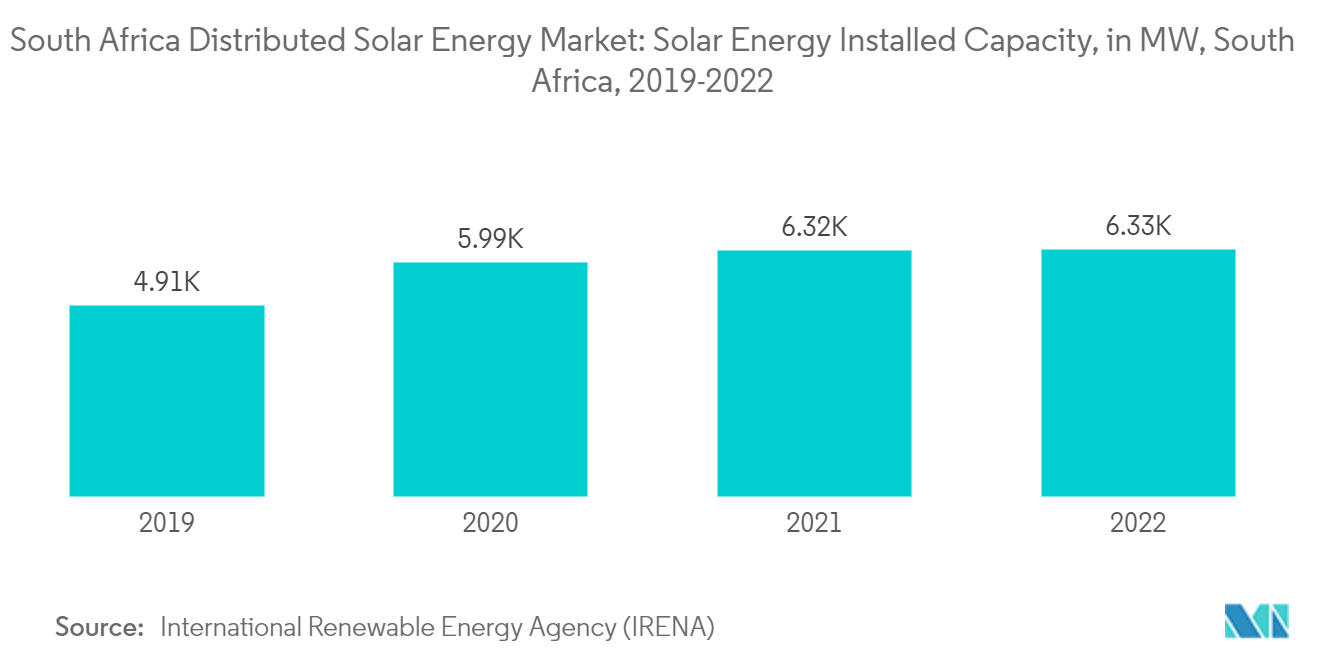
Competitive Landscape
The South African distributed solar energy market is semi-consolidated. Some of the major players in the market (in no particular order) are Genergy, Valsa Trading (Pty) Ltd., Asunim solar south africa private Ltd., JA Solar Holdings, and Solar Energy Group (Pty) Ltd.
South Africa Distributed Solar Energy Industry Leaders
Genergy
Valsa Trading (Pty) Ltd
JA Solar Holdings
Solar Energy Group (Pty) Ltd
Asunim Solar South Africa (Pty) Ltd.
- *Disclaimer: Major Players sorted in no particular order
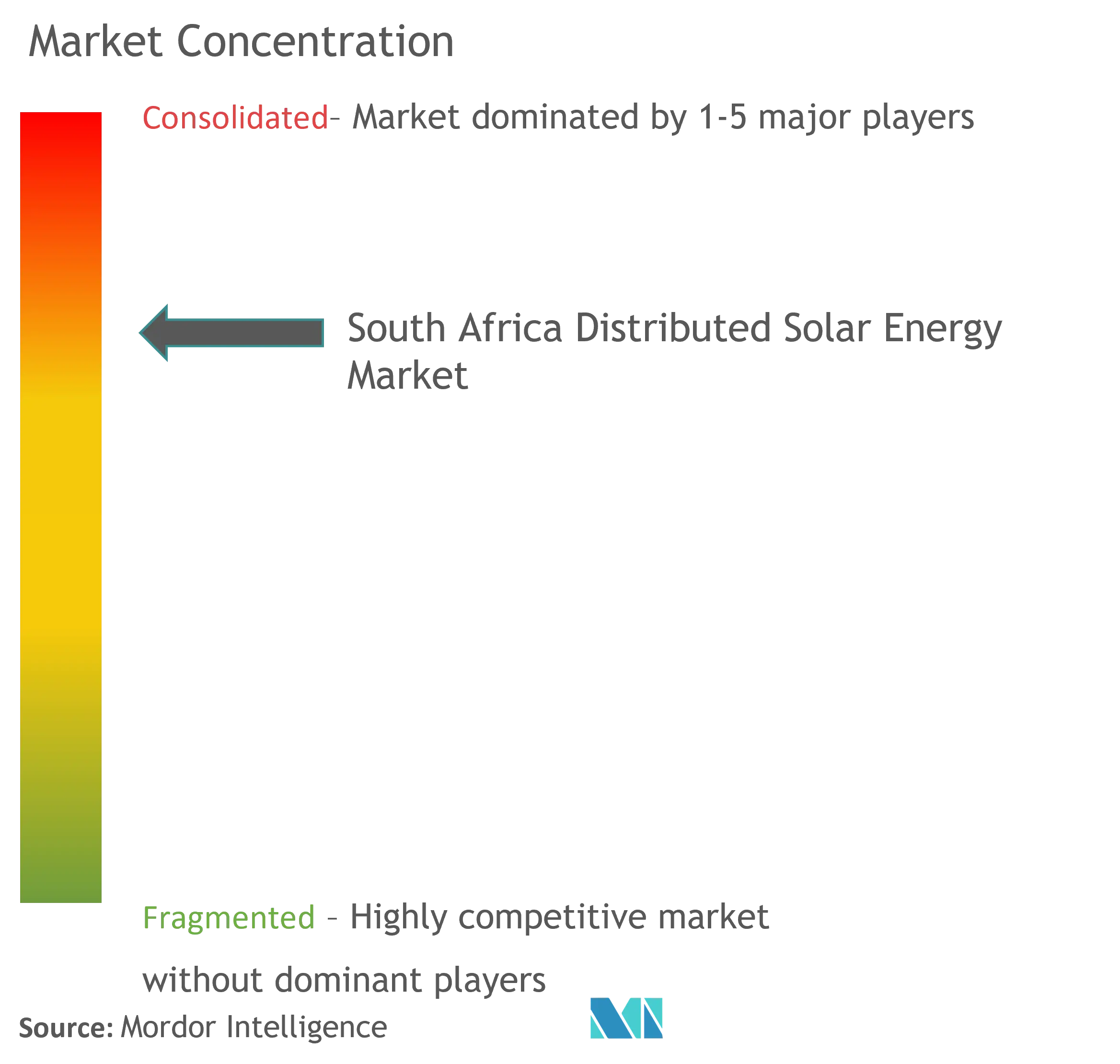
Recent Industry Developments
- In June 2022, the National Energy Regulator of South Africa (NERSA) announced approval of 16 power facilities with a combined capacity of 211 MW with 15 of the project applications for solar PV plants. The new solar energy projects are anticipated to operate under the regulatory framework of the country for distributed-generation power facilities.
- In May 2022, Sola Group secured approval from the National Energy Regulator of South Africa (Nersa) to build two 100 MW distributed solar power plants.
South Africa Distributed Solar Energy Market Report Scope
Solar energy refers to the energy obtained from the Sun's radiation. It is a renewable and abundant source of energy that can be harnessed and converted into usable forms such as electricity and heat. The Sun emits electromagnetic radiation, including visible light, infrared, and ultraviolet (UV). Solar energy technologies capture and convert this radiation into usable energy for various applications.
The South African market for distributed solar energy is segmented by end-users into residential, commercial, and industrial. For each segment, the market sizing and forecasts have been done based on installed capacity.
Key Questions Answered in the Report
How big is the South Africa Distributed Solar Energy Market?
The South Africa Distributed Solar Energy Market size is expected to reach 1.04 gigawatt in 2025 and grow at a CAGR of 16.70% to reach 2.25 gigawatt by 2030.
What is the current South Africa Distributed Solar Energy Market size?
In 2025, the South Africa Distributed Solar Energy Market size is expected to reach 1.04 gigawatt.
Who are the key players in South Africa Distributed Solar Energy Market?
Genergy, Valsa Trading (Pty) Ltd, JA Solar Holdings, Solar Energy Group (Pty) Ltd and Asunim Solar South Africa (Pty) Ltd. are the major companies operating in the South Africa Distributed Solar Energy Market.
What years does this South Africa Distributed Solar Energy Market cover, and what was the market size in 2024?
In 2024, the South Africa Distributed Solar Energy Market size was estimated at 0.87 gigawatt. The report covers the South Africa Distributed Solar Energy Market historical market size for years: 2019, 2020, 2021, 2022, 2023 and 2024. The report also forecasts the South Africa Distributed Solar Energy Market size for years: 2025, 2026, 2027, 2028, 2029 and 2030.
Page last updated on:
South Africa Distributed Solar Energy Market Report
Statistics for the 2025 South Africa Distributed Solar Energy market share, size and revenue growth rate, created by Mordor Intelligence™ Industry Reports. South Africa Distributed Solar Energy analysis includes a market forecast outlook for 2025 to 2030 and historical overview. Get a sample of this industry analysis as a free report PDF download.
